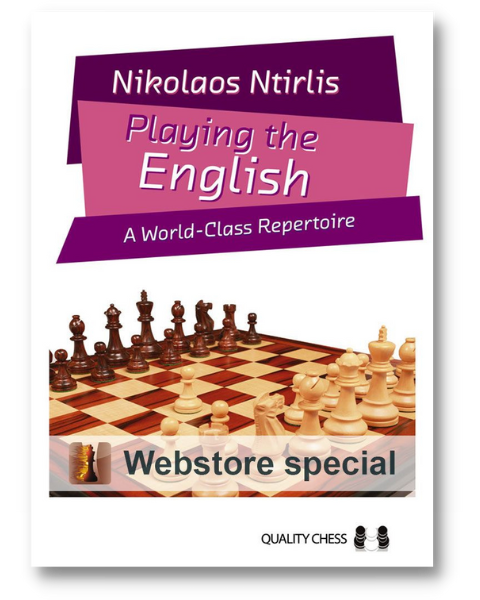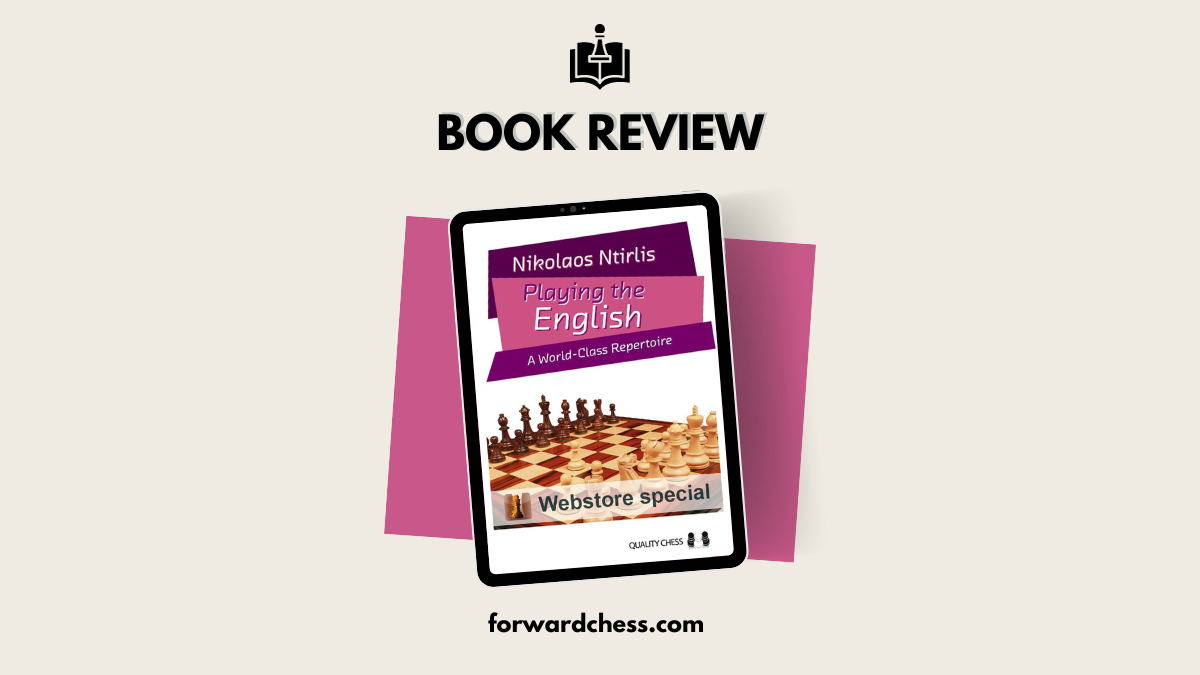Book Review: Playing the English by Nikolaos Ntirlis
“Every great master will find it useful to have his own theory on the openings, which only he himself knows, a theory which is closely linked with plans for the middle game.”
– Former World Champion Mikhail Botvinnik.
At his peak, Mikhail Botvinnik was a noted opening researcher who made many contributions to opening theory, and the above quote summarises his views on openings, with an implicit emphasis on understanding the openings. Of course, he was writing in the distant past, and while opening research is clearly still essential, chess information is disseminated rapidly in these days of virtually instant access to the latest games. In addition, the availability of super-strong chess engines has radically changed the way openings are studied.
However, information doesn’t equate to understanding. In his book, Re-Engineering the Chess Classics, GM Matthew Sadler writes:
“In 2023, any player – amateur or professional – can learn the truth about 95% of chess positions within a few seconds by pointing their engine at it with a single click… If an engine points out a missed win of material, then you sit up and take notice. If the engine offers a line that it evaluates as +0.3 and rates your choice as +0.2, you are quite likely to shrug your shoulders and move on.”
Sadler is in a sense agreeing with Botvinnik that opening study must also be about understanding and not just the memorisation of variations, and this means looking at the resulting middlegame, and sometimes endgame, positions. Hence, good opening books should combine the essential variations of an opening with its typical plans and strategies. Playing the English by opening specialist and Correspondence IM Nikolaos Ntirlis is a recent example of a book that does this well.

The English Opening is a popular opening at all levels of chess and has been the subject of many books over the years as the basis of a repertoire for White. However, it is a somewhat amorphous opening, and transpositions are sometimes tricky to manage. The author has made a good job of dealing with this issue, and potential transpositions out of the repertoire have motivated his recommended move orders in many cases. As an example, repertoire books often differ depending on what move they recommend for White after 1.c4 e5, which aims at a Reversed Sicilian. The two options are 2.Nc3 and 2.g3, and there are pros and cons for each option. This book mostly recommends the first move against Black’s options. However, this option allows Black to transpose to the Reversed Rossolimo Variation (1.c4 e5 2.Nc3 Bb4), where the author recommends 3.Nd5.
It’s interesting that the author sometimes recommends transposing to an associated Queen’s Pawn opening where appropriate. An unusual example of this in an English repertoire book is his suggestion to transpose to the King’s Indian Defense with 1.c4 Nf6 2.Nf3 g6 3.Nc3 Bg7 4.e4 d6 5.d4, as a complement to his recommendation of delaying d2-d4 against Black’s attempts to transpose to the Grünfeld Defense. While the King’s Indian obviously has a vast amount of theory, the author has managed to provide a compact repertoire against it as part of the book.
Each chapter of the book starts with an overview of the variations in the chapter to orient the reader, and this is followed by detailed theory. The introductions are centered around some relevant illustrative games so that readers can see how the game develops after the opening phase is over. This structure has been used previously by the author in other books and it helps readers to absorb the material better.
As expected, extensive use has been made of chess engines in preparing the repertoire options, and the book includes many novelties. The author has also made good use of correspondence games, as they allow players to explore openings to great depths. Some of the recommended variations are developed into the endgame because of these games, and some of the variations are quite forcing and hence need to be memorized by readers.
The annotations are very clear and helpful, and they complement the analytical variations. The author is happy to concede that Black can usually draw with best play and precise defense, or at least a strong chess engine can do this, but this doesn’t mean that a practical game will end in a draw since there is usually some significant play left in the variations he recommends.
In conclusion, let’s end with a quote from the author, which is also reminiscent of Botvinnik:
“Fifteen to twenty years ago, chess players were primarily focused on finding the most optimal and objective strategies to gain an advantage in any given position and overpower their opponents, especially when playing as White. However, a more efficient approach is to aim for positions which we understand well and which enable us to apply consistent pressure on our opponents. In light of this perspective, the English Opening with 1.c4 can provide us with precisely the means to achieve such a goal.”
Ntirlis has provided an exceptional book on the English Opening that delivers a clear and detailed repertoire for White. This is not a beginner’s easy and simple repertoire, but one that demands that readers will do significant and ongoing work in conjunction with the book. Hence, the book should remain an essential reference well into the future.
Postscript: November 2023.
The publisher, Quality Chess, has released a supplement on their website that contains information on the Queen’s Indian Defense and updates on some of the lines in the book.
Have any thoughts or questions? Let us know in the comments!

- New Release: Chess Analysis – Reloaded - March 9, 2024
- Review: The Art of The Endgame – Revised Edition - February 14, 2024
- Review: Study Chess with Matthew Sadler - December 13, 2023
